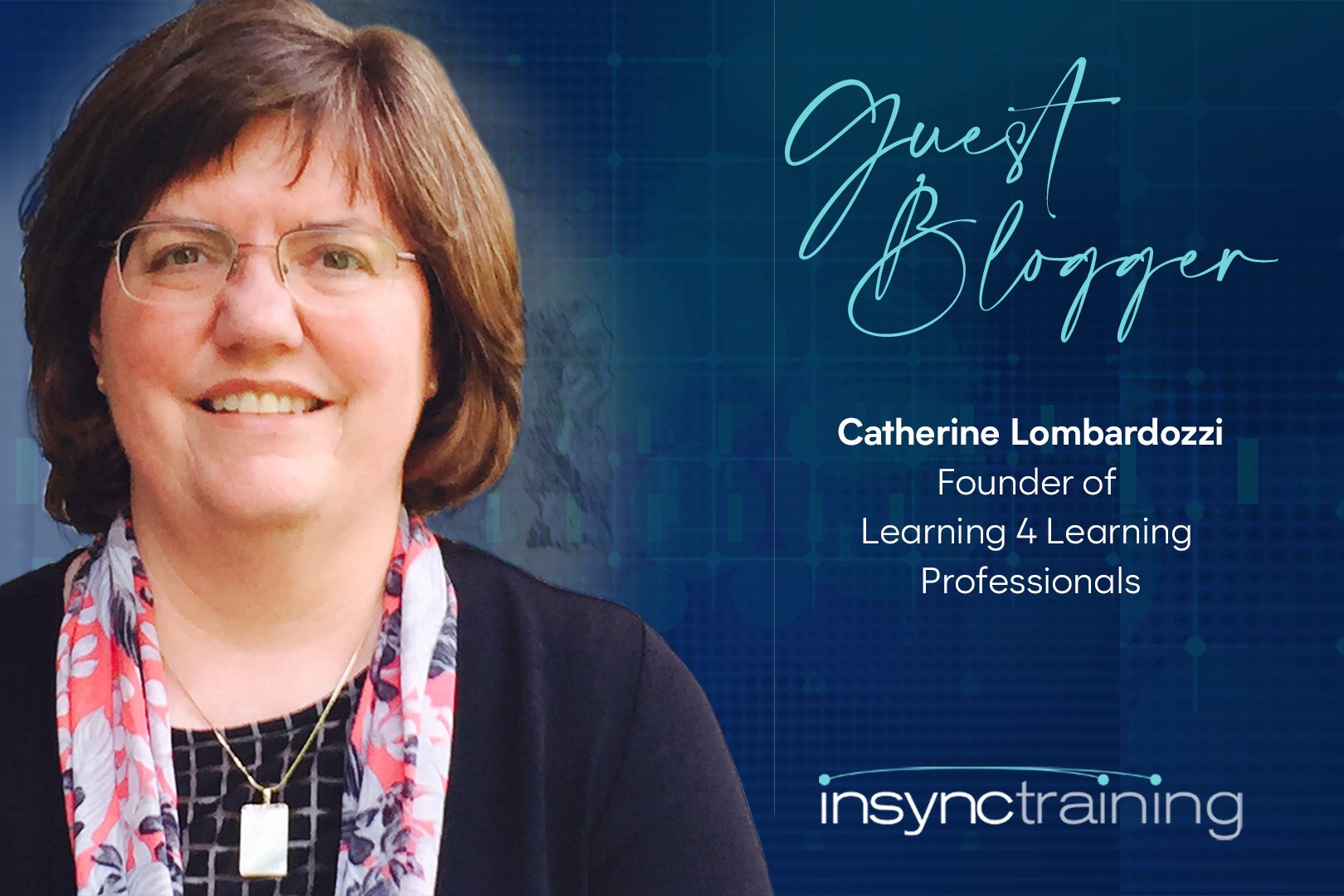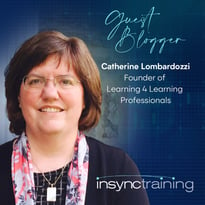4 min read
Watch & Learn: 10 Observational Learning Tips for Professional Development
 Catherine Lombardozzi
:
Sep 21, 2022 7:30:00 AM
Catherine Lombardozzi
:
Sep 21, 2022 7:30:00 AM

If you have little children in your life, you no doubt have experienced the joy (or chagrin) of seeing them imitate what you do. They pick up your mannerisms, your often-repeated sayings, and your likes and dislikes. Imitation is no doubt how you, yourself, learned how to dress, how to throw a ball, and how to take responsibility.
This kind of learning continues throughout our lives.  Humans perpetually learn from observation – it may be how you learned to make a persuasive presentation, to produce a webinar, or even how to hold yoga poses or toss a pizza crust.
Humans perpetually learn from observation – it may be how you learned to make a persuasive presentation, to produce a webinar, or even how to hold yoga poses or toss a pizza crust.
What I learned from Grandmom
Observation is a funny thing, though. One of our favorite family stories involves my mother’s cooking. As the story goes, my father got quite frustrated because whenever my mother made stuffing for turkey, she always burned the onions. When Dad asked her about it, she told him that was the way her mother always did it. So next time we visited my grandmom, Dad asked her why she burned the onions. Grandmom said she never meant to burn the onions, but with all the hubbub with six kids underfoot and other cooking tasks to attend to at the same time, it just turned out that way, and she was never one to waste food.
So learning from observation is a critical skill, but it isn’t as easy as watch and learn. When you have a professional development goal – especially one that involves deep skill-building – observing others plays an important role, but there are some parameters for doing that well.
How we learn by observation
Researchers have studied observational learning and identified some of the critical elements of that process. When you learn through observation, you first notice details, then you internalize them, imitate them, and somehow check to see how successful that attempt has been.When you’re trying to learn a skill that plays out inside people’s minds, you need them to articulate what they are thinking – to “talk out loud” the process they are going through in their heads so you can “see” it (a practice called cognitive apprenticeship).
Observational learning sounds quite simple but as my mother inadvertently illustrated, there is a lot of room for error. Did you notice the right details? Understand what you were seeing and hearing? Have you remembered right? Or interpreted what you saw correctly? How true was your imitation? Can you tell what nuances you successfully demonstrate in your attempts, and can you identify what still needs to be fine-tuned?
room for error. Did you notice the right details? Understand what you were seeing and hearing? Have you remembered right? Or interpreted what you saw correctly? How true was your imitation? Can you tell what nuances you successfully demonstrate in your attempts, and can you identify what still needs to be fine-tuned?
10 Tips to make the most of observational learning
Observational learning abounds in professional skill development. You may watch fellow facilitators to learn new programs or develop your techniques. You may work side-by-side with a technical specialist to see how they operate equipment to get the right sound and lighting. You may accompany a consultant on a client visit to understand how they explore new project opportunities. If you do it well, shadowing talented people can be a real skill-building accelerant.
Because you’ve been learning from observation your whole life, it’s easy to assume you can just pick up skills by watching. But there are ways to ensure that you get as much out of those occasions as possible.
-
Select the right role model. This may well be the most critical step – as much as possible, you want to be learning from exemplars.
-
Prepare. Do your homework by reading documentation and thinking about what you want to learn. Jot down questions you hope the observation (and a conversation with the person you observed) will answer.
-
Make a note-taking guide. Figure out the easiest way to take notes in the moment. Set up a note sheet with sections to capture your insights about specific aspects of what you plan to observe. Determine if you will write notes or take them electronically.
-
Take copious notes and capture questions. There’s often quite a lot to see, and it’s helpful to write as much as you can and go back afterwards to make sense of what happened and determine questions you want to ask.
-
Review notes immediately after observation. Set aside time to look over notes and add details that got left out in the heat of the moment. Jot additional questions. Note immediate insights.
-
Talk to your role model about what you saw. Articulate what you have come to understand from the observation and verify you are taking away the right lessons. If possible, seek additional advice and nuanced details from the person you observed. Make sure you are interpreting actions and thought processes correctly.
-
Capture guidance for your future action. Review your notes and determine how to incorporate what you’ve learned into how you will behave in the future. Create your own checklist for what you hope to do or do differently.
-
Practice and apply in safe spaces. Find a good opportunity to try out what you’ve learned. At first, practice in safe environments if you can. And recruit support if needed to help you when you apply what you’ve learned in the workplace.
-
Get feedback. If possible, ask someone to observe you as you apply your developing skills so you can get objective feedback. Prepare your observer to check for specific things that you hope to demonstrate. Or use your own checklist to monitor your success at implementing what you gleaned from your role model.
-
Keep fine-tuning. Continue to engage with different role models and continuously deepen your skills.
Of course, there will also be many opportunities to learn through observation that are more spur-of-the-moment. Even then, it’s useful to consider aspects on which you want to focus and to take notes as soon as possible so you can refer to them when you use those skills.
Observational learning is a critical tool for your professional development. Using this more deliberate approach to observation (noticing, interpreting, remembering, imitating, and checking your results), you’ll be less likely to wind up metaphorically burning the onions. (Miss you, Mom!)
InSync Training can help you on your professional development journey. Visit The InSync Academy Course Gallery for world-class, industry-standard certifications and workshops. Become a Certified Virtual Training Expert™ to fine-tune your virtual classroom training approach, in a time zone that works for you: APAC, EMEA, and Americas.



